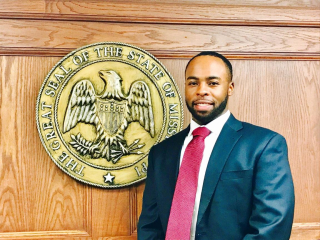"You better watch out, You better Not Cry": CFPB Releases Bulletin on Detecting and Preventing Consumer Harm from Production Incentives
Happy Holidays! My name is Andre Cotten, and I recently joined NAFCU as a Regulatory Compliance Counsel. Prior to NAFCU, I worked as a Senior Associate with PwC's Financial Services Risk and Regulatory practice in the New York City office. I am loving my Regulatory Compliance Team, and I look forward to interacting with all of you.
We previously blogged about the NCUA's Incentive Compensation Rule. The previous post discussed the 3 NCUA rules that limit incentive compensation practices: Section 701.21(c)(8) which restricts practices in connection with lending activities; Section 701.23(g) which places limits on compensation relating to the sale or purchase of eligible obligations; and Section 721.7 which addresses compensation related to incidental powers.
Today's post expands on the regulatory guidance for incentives pursuant to the recently released bulletin from the Consumer Financial Protection Bureau (CFPB). On November 28, 2016, the CFPB issued a compliance bulletin providing direction on detecting and preventing consumer harm from production incentives. The Bureau discusses some specific instances of risks to consumers from incentives and the CFPB's expectations.
Financial services companies routinely accomplish business objectives through programs that tie outcomes to certain benchmarks. If an incentive program is properly implemented and monitored, the incentives can benefit both the consumer and financial entity as well as the financial marketplace as a whole. For instance, financial services firms will be able to attract and retain top-performing talent, and consumers would benefit from enhanced customer service and exposure to products or services that are beneficial to their financial objectives.
Incentive programs are commonly found in the cross-selling of products and services to existing consumers, sales to new customers, sales at higher prices where pricing discretion exists, quotas for customer calls completed and collections benchmarks. Financial services firms may apply these production incentives to both employees and service providers. The risks these incentives may present to consumers are significant if poorly monitored. The CFPB bulletin also describes compliance management actions that its supervised entities should take to mitigate risks.
Risks to Consumers from Incentives
In light of the recent enforcement action against Wells Fargo, the CFPB is particularly keen to the culture of unrealistic, high-pressure targets that incentive programs can create. If incentive programs are not carefully and properly implemented and monitored, they may encourage overly aggressive marketing, sales, services and collections tactics.
Incentive programs without sound compliance monitoring may lead to blatant violations of Federal consumer financial law. Other risks to the financial services institution may include public enforcement, supervisory actions, private litigation, and reputational harm.
The CFPB Bulletin also listed some specific examples of problematic behavior related to incentive programs, which include:
- Sales goals may encourage employees, either directly or indirectly, to open accounts or enroll consumers in services without their knowledge or consent. Depending on the type of account, this may further result in, for example:
- Improperly incurred fees;
- Improper collections activities; and/or
- Negative effects on consumer credit scores.
- Sales benchmarks may encourage employees or service providers to market a product deceptively to consumers who may not benefit from or even qualify for it;
- Paying compensation based on the terms or conditions of transactions (such as interest rate) may encourage employees or service providers to overcharge consumers, to place them in less favorable products than they qualify for, or to sell them more credit or services than they had requested or needed;
- Paying more compensation for some types of transactions than for others that were or could have been offered to meet consumer needs, which could lead employees or service providers to steer consumers to transactions not in their interests; and
- Unrealistic quotas to sign consumers up for financial services may incentivize employees to achieve this result without actual consent or by means of deception.
The CFPB's Expectations
In short, the CFPB expects a robust, comprehensive compliance management system (CMS) that will utilize incentives to institute effective controls and oversight. The more strict controls will be necessary where incentives (i) apply to products or services less likely to benefit consumers or have a higher potential for consumer harm, (ii) reward outcomes that may not align with consumer interests, or (iii) involve a significant portion of an employee or service provider's compensation. The CFPB does not mandate a particular CMS structure, and the Bureau recognizes that structures will vary based on the size and complexity of an organization.
A robust compliance program starts with the tone from the top set by the board of directors and management. The tone from the top is effectuated through policies and procedures, training, monitoring and corrective action. According to the CFPB Bulletin, a supervised entity's corrective actions should include the termination of employees, severance of relationship with service providers, changes to the structure of incentives, additional training, and reimbursement of funds to all affected consumers.
For more information pertaining to the oversight of incentive programs, please review the CFPB's Supervision and Examination Manual and Chapter 7 of the NCUA's Examiner Guide.
***
On Monday, December 5th, the Federal Reserve released its latest issue of Consumer Compliance Outlook. This issue provides an overview of the Regulation E requirements for foreign remittance transfers. The publication also contains revised interagency questions and answers regarding community reinvestment, regulatory updates, and federal court opinions.
***
Over the Thanksgiving holiday break, I received my second bar license and was admitted to practice law in my home-state of Mississippi.

